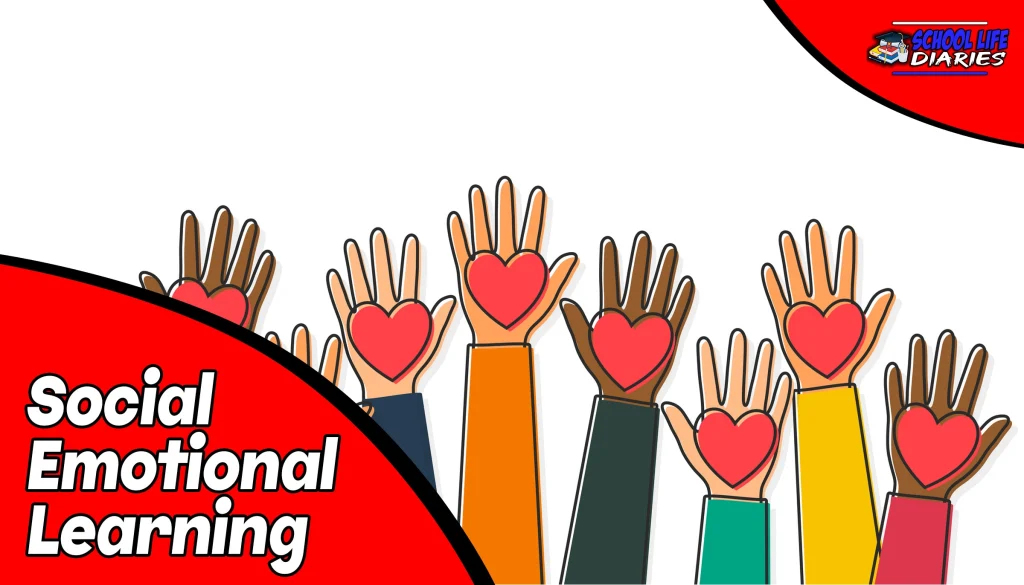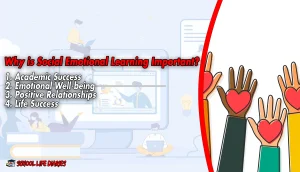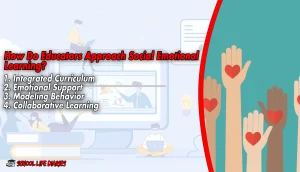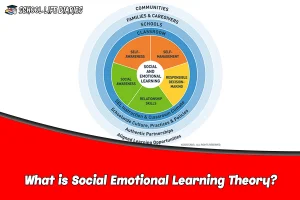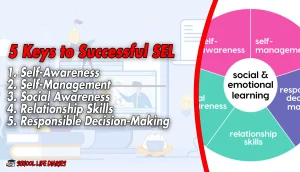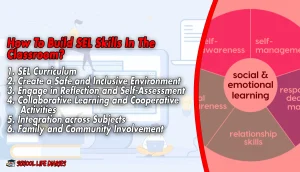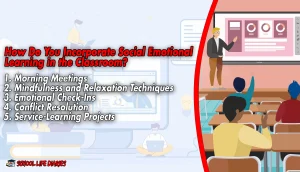In today’s rapidly evolving world, education goes beyond academic excellence. It’s crucial to nurture the holistic development of students, which includes their social and emotional well-being. Social-emotional learning (SEL) is an educational approach that focuses on equipping students with the skills necessary for success in school, relationships, and life. In this article, we will explore the significance of social-emotional learning and delve into various aspects associated with it.
What Is Social Emotional Learning (SEL)?
Social-emotional learning (SEL) refers to the process through which individuals acquire and apply the knowledge, attitudes, and skills necessary to understand and manage emotions, set and achieve positive goals, feel and show empathy for others, establish and maintain positive relationships, and make responsible decisions. It encompasses a range of competencies that are essential for personal and interpersonal growth.
Why is Social Emotional Learning Important?
Social-emotional learning is crucial because it lays the foundation for a healthy and successful life. Here are several reasons why SEL matters:
1. Academic Success:
Research has shown that students who engage in social-emotional learning tend to perform better academically. By developing skills like self-awareness, self-management, and responsible decision-making, students become more focused, motivated, and resilient learners.
2. Emotional Well-being:
SEL helps students recognize and understand their emotions, manage stress effectively, and develop healthy coping mechanisms. This leads to improved mental health and emotional well-being, reducing the risk of anxiety, depression, and other emotional difficulties.
3. Positive Relationships:
Social awareness and relationship skills are integral components of SEL. When students learn to empathize with others, communicate effectively, and resolve conflicts peacefully, they form healthier and more meaningful relationships with peers, teachers, and family members.
4. Life Success:
The skills acquired through SEL are not limited to the classroom. They are essential for success in various aspects of life, including career development, leadership, and overall well-being. SEL equips individuals with the tools to navigate challenges, make responsible choices, and contribute positively to society.
How Do Educators Approach Social Emotional Learning?
Educators play a crucial role in fostering social-emotional learning within the educational setting. Here are some approaches they employ:
1. Integrated Curriculum:
SEL is integrated into the curriculum through explicit instruction, activities, and discussions. Educators create a supportive and inclusive classroom environment that values students‘ emotions and promotes healthy social interactions.
2. Emotional Support:
Teachers provide emotional support to students by creating a safe space where they feel comfortable expressing their thoughts and feelings. They offer guidance, encouragement, and empathy, building trust and nurturing positive relationships.
3. Modeling Behavior:
Educators serve as role models by exhibiting positive social and emotional skills. They demonstrate active listening, empathy, and conflict-resolution strategies, encouraging students to follow suit.
4. Collaborative Learning:
Collaborative learning activities and group projects provide opportunities for students to develop social and emotional skills such as teamwork, communication, and cooperation. These experiences enhance their understanding of diverse perspectives and foster respect for others.
What is Social Emotional Learning Theory?
Social-emotional learning theory is based on the premise that social and emotional skills can be taught, learned, and developed over time. The theory emphasizes the importance of integrating social-emotional learning into educational settings to support students’ overall well-being and academic success. It provides a framework for understanding the components of SEL and the processes involved in acquiring these skills.
5 Keys to Successful SEL
Social-emotional learning encompasses several key competencies. Here are the five essential elements:
1. Self-Awareness:
Self-awareness involves recognizing and understanding one’s emotions, strengths, and limitations. It includes cultivating a positive self-image and an accurate understanding of one’s abilities and areas for growth.
2. Self-Management:
Self-management refers to the ability to regulate emotions, thoughts, and behaviors in various situations. It involves setting goals, demonstrating self-discipline, and utilizing effective strategies for managing stress and conflicts.
3. Social Awareness:
Social awareness entails understanding and empathizing with others. It involves recognizing and respecting diverse perspectives, cultivating empathy, and appreciating the importance of inclusivity and social justice.
4. Relationship Skills:
Relationship skills focus on establishing and maintaining positive relationships. This includes effective communication, active listening, cooperation, and conflict resolution. Building healthy relationships contributes to personal and academic success.
5. Responsible Decision-Making:
Responsible decision-making involves making thoughtful and ethical choices. It encompasses considering the well-being of oneself and others, evaluating consequences, and taking actions aligned with personal values and social norms.
How To Build SEL Skills In The Classroom?
Building social-emotional learning skills in the classroom requires intentional efforts. Here are some strategies for educators to foster SEL:
1. SEL Curriculum:
Implement a structured SEL curriculum that aligns with the developmental needs of students. Provide explicit instruction, activities, and resources to develop specific social and emotional competencies.
2. Create a Safe and Inclusive Environment:
Establish a classroom environment that promotes safety, inclusivity, and respect. Encourage open dialogue, active participation, and shared responsibility. Celebrate diversity and create opportunities for students to learn from each other’s experiences.
3. Engage in Reflection and Self-Assessment:
Encourage students to reflect on their emotions, actions, and interpersonal interactions. Promote self-assessment and goal-setting, allowing students to monitor their progress and identify areas for improvement.
4. Collaborative Learning and Cooperative Activities:
Foster collaborative learning experiences that promote teamwork, communication, and problem-solving. Provide opportunities for students to work together, exchange ideas, and learn from one another.
5. Integration across Subjects:
Integrate SEL into various subject areas. Provide opportunities for students to apply social and emotional skills while exploring academic content. For example, encourage discussions on ethical dilemmas in literature or engage in community service projects that promote empathy and civic responsibility.
6. Family and Community Involvement:
Involve families and the broader community in supporting SEL initiatives. Collaborate with parents and community members to reinforce SEL skills outside of the classroom and provide resources for continued growth.
How Do You Incorporate Social Emotional Learning in the Classroom?
Incorporating social-emotional learning in the classroom involves integrating SEL practices into everyday teaching and interactions. Here are some practical ways to incorporate SEL:
1. Morning Meetings:
Begin each day with a morning meeting that promotes positive interactions, sets a positive tone, and allows students to share their thoughts and feelings. Use this time to reinforce social and emotional skills and build a sense of community.
2. Mindfulness and Relaxation Techniques:
Teach mindfulness and relaxation techniques to help students manage stress and develop self-awareness. Incorporate short mindfulness exercises or guided relaxation activities into daily routines.
3. Emotional Check-Ins:
Regularly check in with students to assess their emotional well-being. Create opportunities for them to express their feelings and offer support if needed. This helps build trust and demonstrates care for their holistic development.
4. Conflict Resolution:
Teach students effective conflict resolution strategies, such as active listening, compromise, and problem-solving. Encourage them to engage in respectful dialogue when conflicts arise and guide them toward mutually agreeable solutions.
5. Service-Learning Projects:
Engage students in service-learning projects that promote empathy, community involvement, and civic responsibility. Allow them to identify social issues and take action to address them, fostering a sense of social awareness and responsibility.
FAQs:
Q: What is the definition of social-emotional learning (SEL)?
A: Social-emotional (SEL) refers to the process through which individuals acquire and apply the knowledge, attitudes, and skills necessary to understand and manage emotions, establish positive relationships, and make responsible decisions.
Q: Can social-emotional learning improve academic performance?
A: Yes, research has shown that social learning can improve academic performance. By developing skills like self-awareness and self-management, students become more focused, motivated, and resilient learners.
Q: How can educators incorporate social-emotional learning into their teaching?
A: Educators can incorporate social learning by integrating it into the curriculum, providing emotional support, modeling positive behavior, and promoting collaborative learning and inclusive environments.
Q: What are the key components of social-emotional learning?
A: The key components of social learning include self-awareness, self-management, social awareness, relationship skills, and responsible decision-making.
Q: How can social-emotional learning benefit students in their lives beyond school?
A: Social learning equips students with essential skills for success in various aspects of life, including career development, relationships, and overall well-being. It helps them navigate challenges, make responsible choices, and contribute positively to society.
Q: How can families support social-emotional learning at home?
A: Families can support social-emotional at home by creating a nurturing environment, engaging in open communication, modeling positive behaviors, and reinforcing the development of social and emotional skills.
Conclusion:
Social learning is a critical component of education that supports the holistic development of students. By focusing on self-awareness, self-management, social awareness, relationship skills, and responsible decision-making, SEL equips students with the necessary tools for academic success, emotional well-being, and a fulfilling life.
Educators play a vital role in fostering SEL in the classroom by incorporating SEL practices, creating inclusive environments, and modeling positive behaviors. By embracing social-emotional learning, we empower students to thrive academically, emotionally, and socially.

